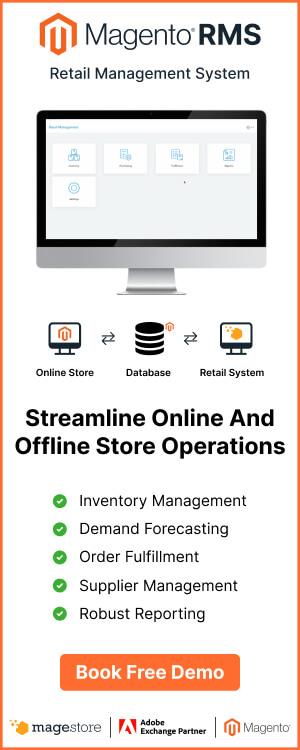Making the right product assortments is the most essential and challenging thing in retail. You don’t want to run out of stock that customers need, but keeping stock for a long time will hurt your bottom line. A good merchandise assortment can help you wipe away all those worries. So what is product mix, and how to optimize it to increase your profit and enhance customer experience? You’ll find many useful tips in this article.
What is assortment in retail?
Product assortment or product mix in retail refers to the different range of goods that a manufacturer or shop sells to customers.
Making a good product selection is not simple. If you hold a wide product range, you’ll risk ending up with a lot of dead stock. But if your product mix is too narrow, you may not meet customer demands and lose those potentials.
The best merchandise assortment can help you increase sales and customer experience. The following characteristics make up the product mix:
- Breadth: This product width is the number of product lines a business or merchant carries. For example, an automaker could produce cars line, SUVs line, and trucks line.
- Length: The number of items in a certain chain or line of products. The product lines of an automotive manufacturer may include four sedan models, three SUV types, and two truck versions.
- Depth: This product depth counts the number of variations in each product line. For instance, a car company can provide basic, standard, and luxury models in each line.
- Consistency: It demonstrates how closely the various product lines are related to each other.
Importance of product assortment

As mentioned above, product assortment is crucial as it’s the force to boost sales and affects the customer purchasing experience. The followings are some main benefits that the right merchandise mix analytics can bring to your business:
Increase sales and profit margins
According to analytics by Mckinsey on some grocery retailers, merchandising assortment plan helps them reduce the number of SKUs by 36% while increasing sales and gross margins by up to 2%. Providing a product mix as your consumers are looking for can help you increase sales and margins thanks to consistent sales and less dead stock.
Besides, with assortment optimization, you only purchase what you need and therefore cut down on excess inventory expenses and storage costs. As a result, you will significantly reduce your procurement costs.
Improve customer experience
66% of customers expect retailers to understand their needs and expectations. Thus, you should ensure that customers can easily get what they need in your stores without spending time to find out or wait for restocking. Having the right product assortment strategy helps you define what merchandise mix you should choose.
Types of product assortment strategies in retail

Each retailer will pursue different retail assortment analytics and strategies based on their targets. We’ll discuss the five methods for you to consider below:
Wide assortment
A wide assortment approach means that your product mix consists of several product lines with limited product variations within each.
The best example is hypermarkets, where you can buy anything from food, clothing, and furniture to gadgets, office supplies, and camping equipment. With this approach, merchants may appeal to many customers to these stop shops for their purchasing requirements.
Deep assortment
In contrast to the wide assortment, the deep assortment strategy caters to fewer product lines but provides a greater product variety. For example, an athletic shoe store will stock a wide selection of athletic shoes in several sizes and colors. They don’t want to stock women’s sandals as it’s another product line.
This strategy is more suitable for retail stores that want to attract more dedicated and loyal customers. With hundreds of variations within a product line, shoppers can find exactly what they want in the store.
Localized assortment
A localized assortment approach adjusts the store’s product mix by its location. The assortment can change based on various local community needs in a specific region.
For example, a shoe store’s product mix will differ in Seattle and Austin. Since there is a big difference in temperature between these two cities, making the same shoe selection is not a good idea.

Mass market assortment
This strategy is suitable for retailers who target to serve as many customers as possible. Mass market assortment covers both wide and deep product mixes. It provides a large selection of product categories with hundreds or thousands of product variations in each line.
The vast majority of retailers are still looking for a mass-market selection. However, only large retailers, such as Walmart, Home Depot, etc. can afford it with their enormous storage capacity.
Scrambled assortment
Retailers can use a scrambled assortment strategy to attract customers outside their target segments. They can offer some items that don’t belong to their primary product mix. These added products can help get more new customers and increase the cross-sales opportunity for the core products.
For instance, a bakery store can sell accessories and decorations for parties. Or a food store can stock some batteries and flowers to attract potential customers.
8 tips to optimize product assortment

Optimizing product assortment is always the retailers’ goal but it’s not simple after all. These are 8 recommended tips for your reference.
Define your target customers
The first step to optimize product assortment is to understand your target customers and their needs. With an advanced POS system, retail stores can get all inventory and customers’ data from all sales channels in one place. The system also helps you generate POS data analysis showing your customer insights, top-seller products, sales trends, etc. You can then decide what product assortment breadth and depth to use.
For instance, gift shops that cater to lone travelers, families, and even local customers should carry a variety of goods, such as key chains, apparel, toys, mugs, etc. In contrast, if you run a gaming store, your clients may expect to find a huge selection of gaming gadgets and accessories when they visit.
Identify the right suppliers
Choosing the right suppliers is also essential in product assortment optimization. What might happen if you have a good selection of products, but your current suppliers can not deliver inventory consistently and on time? You would feel a lot of the effects.
A poor supply can disrupt your business operations when the suppliers can’t provide you with enough goods in time or give you low-quality items which cause sales loss and broken customer relations.
On the other hand, a trusted supplier will offer you high-quality goods and services in time with reasonable prices that meet your requirements.
Execute inventory analysis
Inventory analysis helps you know what’s selling and what’s not. After that, you can utilize that data to determine whether you need to deepen or broaden your assortments.
An accurate and real-time report from POS software will help you better decide on your product mix.
For instance, you may extend your collection to include more items from a certain brand or designer if their products are easy to sell. Or you can broaden your selection with more variations of a single product if customers are buying that product in multiple colors or sizes.
Observe shopping habits and patterns

Besides knowing your target customers, observing how people act online and in stores is also essential. Understanding customers’ shopping behaviors and trends will help determine an ideal product mix.
In-store customers
- Observe what they buy and note down all questions they normally ask,
- Observe the items that they purchase together.
Online customers
Analyze website browsing to know what customers are searching for. Then you will see what you need to stock up.
Staples and loss leaders
A loss leader strategy entails offering a product at a non-profitable price to attract new consumers or upsell existing ones. Staples are necessities, such as diapers, laundry detergent, or shaving cream, which consumers frequently buy out of need rather than want.
This product selection strategy targets widening and deepening your product mix to attract more customers to your store. It also helps increase customers’ basket size with other relevant and profitable products.
Life cycle (seasonality)
When deciding on your product mix, you should also consider the seasons. You might need to widen your assortment in certain areas while narrowing it down in others depending on the specific time during the year.
It would help to choose a suitable product mix for different seasons and customers’ expectations. For instance, you can sell different clothes in both winter and summer as many customers don’t want to visit a clothing store in summer to buy a sweater.

Complimentary items
Complementary goods are items that go well together and aid the buyer in achieving their objective. For example, when customers buy cereal, they often look for milk or yogurt. Or DVDs always go along with a DVD player.
A recent study pointed out that grouping product according to their purpose rather than their physical attributes increases purchases and customer spending. Particularly, it’s effective with less engaged consumers and for consumers with fewer clear purchasing goals.
Update trends
Local trends can have a great influence on your product mix. You have to pay attention to what’s happening around you to know what assortment of merchandise you should make at a certain time. Retailers who adjust and create assortments depending on customer needs can take advantage of consumer demand.
For example, the Covid 19 pandemic has brought significant needs for medical and healthcare products. Besides, people feel bored when staying home too long, so they start to make bread or some crafts. Retailers who adapted to these needs at that moment gained market share and made profits.
Use the right tools
Optimizing your product mix might be challenging, but having the correct tools will simplify it. A reliable inventory management system is one of the useful tools for your product assortment optimization. This system can assist you in maintaining stock levels, counting the sold items, etc. All those functions are necessary to speed up the process.
Future of product assortments

Endless aisles
The endless aisles enable in-store customers to place orders online while they are at the store. Its objective is to provide customers with the finest shopping experience, regardless of where and how they choose to shop.
With this strategy, you may carry less inventory and take fewer risks in your small store while still having a large product selection and retaining your regular consumers.
However, the endless aisle offers an infinite number of SKUs. You will need to integrate your sales and stock numbers to have the right inventory levels at any time.
Omnichannel shoppers
Enhancing omnichannel customer experience is the goal of most businesses today. Customers always expect to reach you through different channels that they feel comfortable with. They can buy in-store, buy online, pick up in-store (BOPIS), purchase online or through social commerce.
Therefore, you have to connect all your purchasing channels to create a seamless shopping experience. This will help you make the best product assortment based on your inventory and customer data.
In general, getting the right assortment of products is complex, and optimizing it is even more challenging. You’ll need data, insights into your clients, and market trends. Besides, understanding your capacity is also crucial. All tips can be good solutions if you are having difficulties. If you’re an assortment planner, follow those tips and make an effective merchandise mix for your future successful business.
FAQs
What is the product assortment strategy?
It’s a method that aids retailers in controlling over their assortment and selecting highlight items to increase sales. When developing an assortment optimization strategy, it’s advised to employ analytics tools and sales research to learn which goods sell more frequently across different user profiles, locations, and seasons.
What are product assortment examples?
We can take the example of a women’s apparel company whose product mix includes three main product categories: dresses, shirts, and pants. These are the breadth of a product line. Regarding dresses, they make 3 lines: formal, casual, and party dresses. Each line is available in several varieties: a midi, maxi, or short dress by length; winter and summer dresses by season. Here, the length is the number of types they provide, and the depth of the product line is the number of colors and sizes in each variety.
Which type of retailer typically carries deep product assortments of narrow product lines?
Retailers targeting dedicated and loyal customers will choose a deep assortment. They’ll specialize in selling limited product lines and try to provide as wide varieties of products in each line as possible.















Thanks for sharing this! I find this very helpful not just to me, but I also see my friends in this field learning from this. Great post!